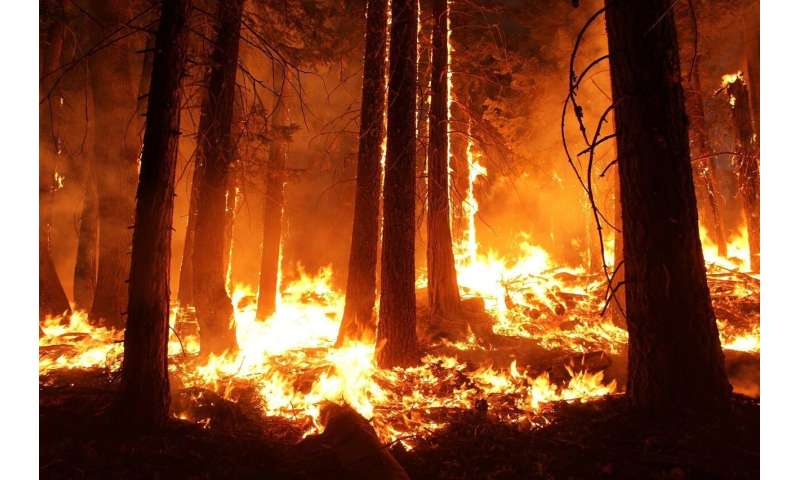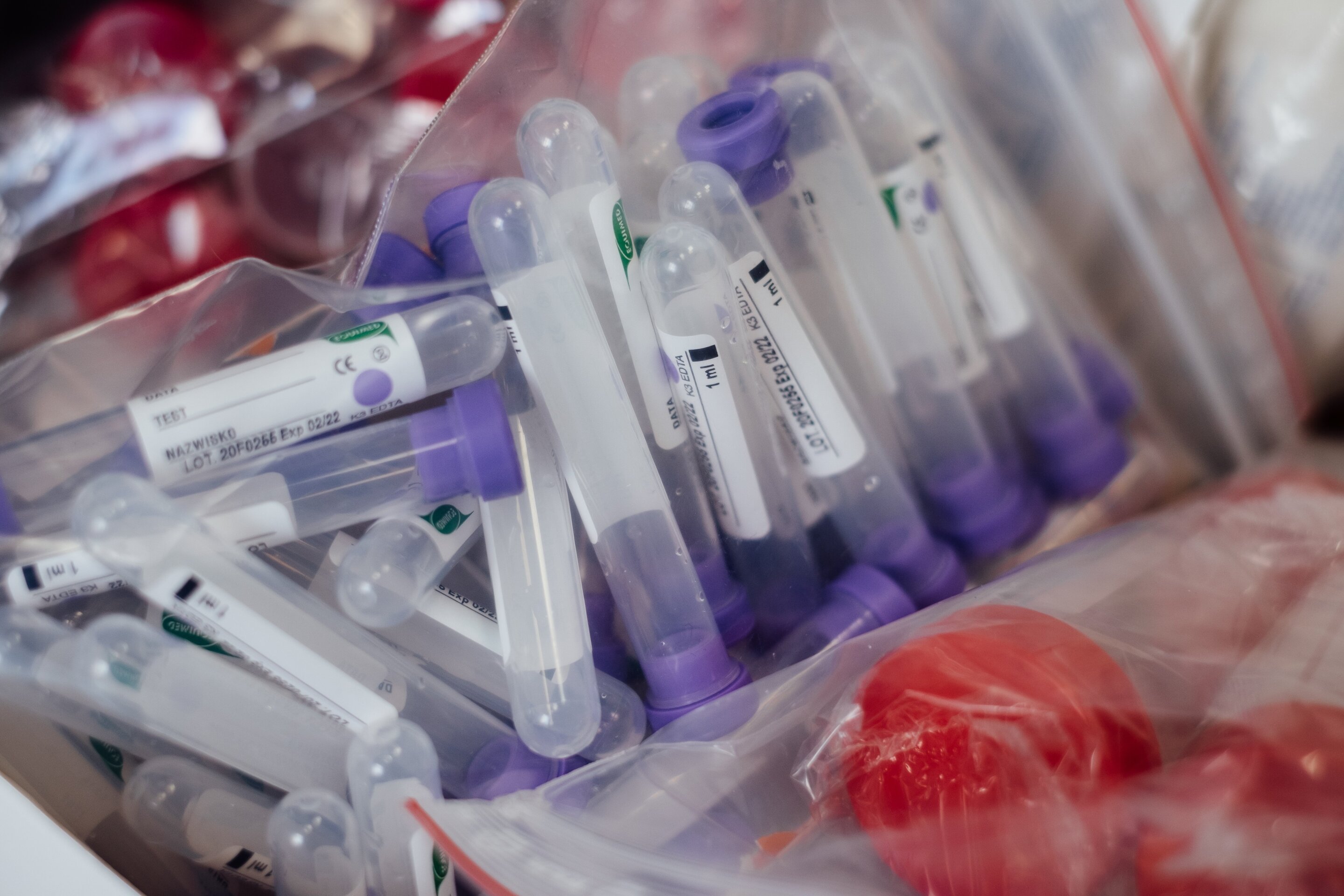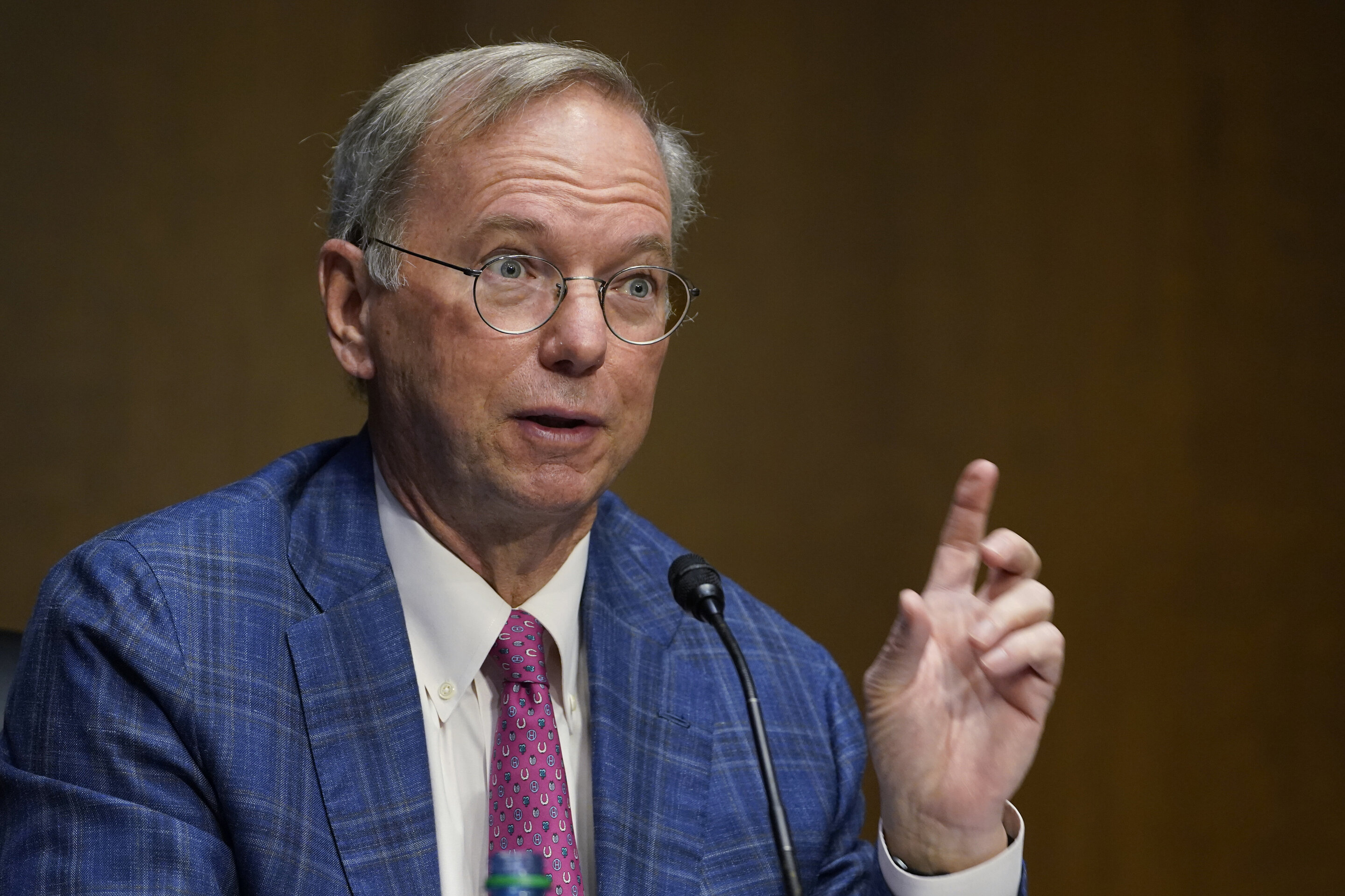#Q&A: A scientist explains the ‘why’ of California’s wildfire crisis
“#Q&A: A scientist explains the ‘why’ of California’s wildfire crisis”

Unexpected bad news hit California more than 11,000 times last week. That’s the estimated number of lightning strikes that unleashed two of the biggest fires in state history. The fires are burning at the same time across more than 1.4 million acres, sending a cloud of smoke stretching across the Western U.S.
Daniel Swain, a climate scientist at the University of California, Los Angeles and the National Center for Atmospheric Research, has emerged as one of the foremost voices explaining how California became a climate tinderbox. Forests dried out over years of rising temperatures, then the ecosystem suffered through the most intense heat wave in decades (and millions of people suffered through the first rolling blackouts in 20 years). The heat and dryness left everything primed for a catalyst to set off a drastic impact.
Lightning sparked the first of what are now more than 7,000 fires. Last year at this time, according to the governor’s office, there were 4,300 fires that burned 56,000 acres.
The fiery consequences of extreme heat are not a surprise. In fact, Swain co-authored a paper that came out just last week with a remarkably prescient and straightforward title: “Climate change is increasing the likelihood of extreme autumn wildfire conditions across California.” The timing is a shock, however, since autumn is still a month away.
Swain’s research and blogging – his post on the underlying environmental dynamics has drawn more than 1,500 comments so far – have made him a public face of climate science while his home state burns. He spoke to Bloomberg Green about the heatwave, what to expect once coastal winds start the real fire season, and where he sees good news in all this. The interview has been condensed and edited for clarity.
Q. Las week you said the recent heat wave in California would raise the risk of wildfires. That was a worry for the fall, something weeks or even months away – and then fires exploded within 48 hours. What happened?
A. A really big lightning event. Usually this time of year there’s a limited number of fire-starts in Northern California. But unfortunately the state got 11,000 opportunities for fires to take hold, and several hundred of them did. Usually the peak of fire season is autumn – unless you get 11,000 lightning strikes without any rain.
Q. How rare is that?
A. No one saw it coming seven days out, but it was in the forecast the day before. In terms of climate change, forecasters don’t really know if these (lightning) events will become more or less common as the climate warms. You can’t really generalize about thunderstorms. The thunderstorms you get in California are actually quite different from the thunderstorms you get in most of the rest of the world.
Q. Do these fires mean California is off the hook for the fall?
A. Offshore wind can start some time in September. A lot of the fires currently burning won’t be out for weeks, after the traditional offshore-wind fire season begins. The vegetation that hasn’t burned yet is still extremely dry. There wasn’t really any meaningful rainfall anywhere. This has catapulted us forward to a bad fire season already, regardless of what happens moving forward.
Q. But shouldn’t there be a very tiny silver lining here? Things can’t burn twice.
A. One of the interesting things we saw, especially in the LNU complex fire in Napa, Solano and Lake counties, is a lot of the areas that burned have already burned in the past couple of years – in some cases twice. There are some places where this is the third time they’ve burned in six years. Usually you would expect burn scars to last for a few years and reduce, if not prevent, fires. Most folks would think we’d have at least five or seven years of reduced risk in some of these areas. But there was just enough time for the vegetation to grow back and support a fire. The warming and drying effect has been so profound that stuff that had regrown was actually dry enough to burn pretty intensely.
Q. How freaked out should we be about the very old trees in Big Basin Redwood State Park?
A. They’re a fire-resilient species, generally speaking, but it was also a particularly intense fire. If you look at their tree-ring core history, a lot of them have witnessed four or five fires over a 1,000-year life. They can clearly thrive in low to medium intensity fires. This is a pretty high intensity fire. There’s going to be a ton of studies on what happened in Big Basin a few years down the line. It’s going to tell us a lot about the resilience of redwood to our new fire regime – not the one that they evolved in and thrived under for thousands of years.
Q. Have forests come back after fires over the last few years?
A. Sometimes an intense fire would have been survivable had it not been followed up by extremely dry and hot conditions after the fire. The fire doesn’t always kill the tree. Sometimes the drought following the fire kills the tree.
Q. Scientific inquiry and panic don’t go great together. What do people get wrong because worry is so high?
A. Unfortunately, a lot of people have interpreted climate thresholds to be like intrinsic, physical cliffs: Once you hit 2° (Celsius), suddenly there’s no way to stop it before it hits 5°C of warming or something like that. I get dozens of emails a week from people who are panicked that there’s a hair trigger, a very specific temperature level after which all hope is lost. Of course, that’s not how the physical system works, which is good news. I don’t often get to say that things are not as bad as people think. But that is one instance where people fortunately have overestimated the degree to which things will quickly get worse.
Q. OK so how bad is it, actually? Lay it out.
A. The reality is it’s more of a sliding scale. Things are getting worse, and they’re getting worse pretty quickly. But that’s because we’re continuing to push the system pretty quickly in the wrong direction, actively. Once we stop doing that, that will slow down.
Q. What else are people getting wrong about the fires?
A. Some folks will say that prior to colonization in California, a million acres a year of fire would have been no big deal. I have no doubt that’s actually true. But we don’t live in a world where there’s 10,000 indigenous people living in relatively small communities in California. There are 40 million people. While it may be true that more land burned in the past, that’s not really the relevant comparison.
Q. The relevant question is: Why are fires becoming harder to control now in the 21st century?
A. There are a variety of answers, one of which is the unfortunate legacy of how we dealt with fire in the 20th century. But the other answer is climate change. It really does matter just how dry the vegetation is, in terms of how the fire behaves. Even relatively “run-of-the-mill fires” are exhibiting this extreme behavior. And that’s what the problem is right now in Northern California. There are dozens of fires, and none of them really are all that minor because they’re all burning really aggressively.
Q. Should we assign names to heat waves, like we do with tropical storms?
A. Oh boy, I don’t know. Naming hurricanes kind of makes sense. In the Atlantic basin, you’re not going to get 200 hurricanes a year. In a bad year, you’re going to get 20. That’s a manageable number of names. Heat waves, though, can happen anywhere on Earth, and they’re defined very differently from one place to another. If it’s hot for a month in summer, is that one heatwave? Most people on Earth don’t experience a hurricane every year. Pretty much everybody on Earth experiences more than one heat wave a year.
Q. Maybe we should give them first names and last names.
A. I don’t know exactly what the science communication is on the naming of extreme events. I know that there is, amazingly, gender bias among people’s perception of hurricane intensity. The death rate is higher slightly for female hurricane names, because people have a tendency to underestimate them. Which says a lot.
Q. What else are you working on?
A. We’re currently developing a statewide disaster-contingency scenario for an extreme flood event. It’s the most foreseeable disaster that everyone’s going to say came by surprise. Think about what happened in 1862 in The Great Flood. We know it’s already physically possible, since it already happened without climate change. Today it would be a multi-trillion dollar disaster. We already showed that we think that the likelihood of this happening over the next 40 years is about 50-50. Over the next 60 years, it’s right around 100%.
Q. Any good news at all?
A. A lightning outbreak that had been in the forecast again for (Sunday) night turned out not to be so widespread after all. So OK … it’s something.
©2020 Bloomberg News
Distributed by Tribune Content Agency, LLC.
Q&A: A scientist explains the ‘why’ of California’s wildfire crisis (2020, August 26)
retrieved 26 August 2020
from https://phys.org/news/2020-08-qa-scientist-california-wildfire-crisis.html
This document is subject to copyright. Apart from any fair dealing for the purpose of private study or research, no
part may be reproduced without the written permission. The content is provided for information purposes only.
If you want to read more Like this articles, you can visit our Science category.
if you want to watch Movies or Tv Shows go to Dizi.BuradaBiliyorum.Com for forums sites go to Forum.BuradaBiliyorum.Com



